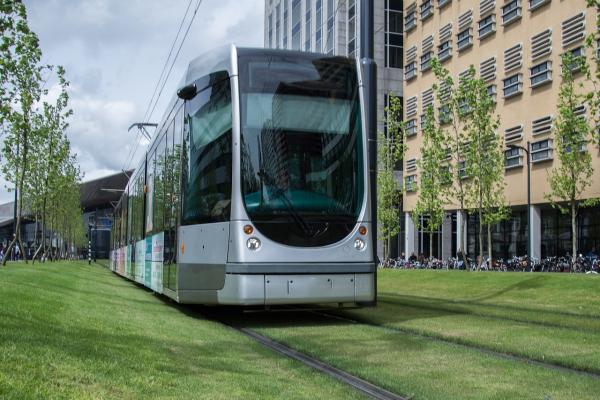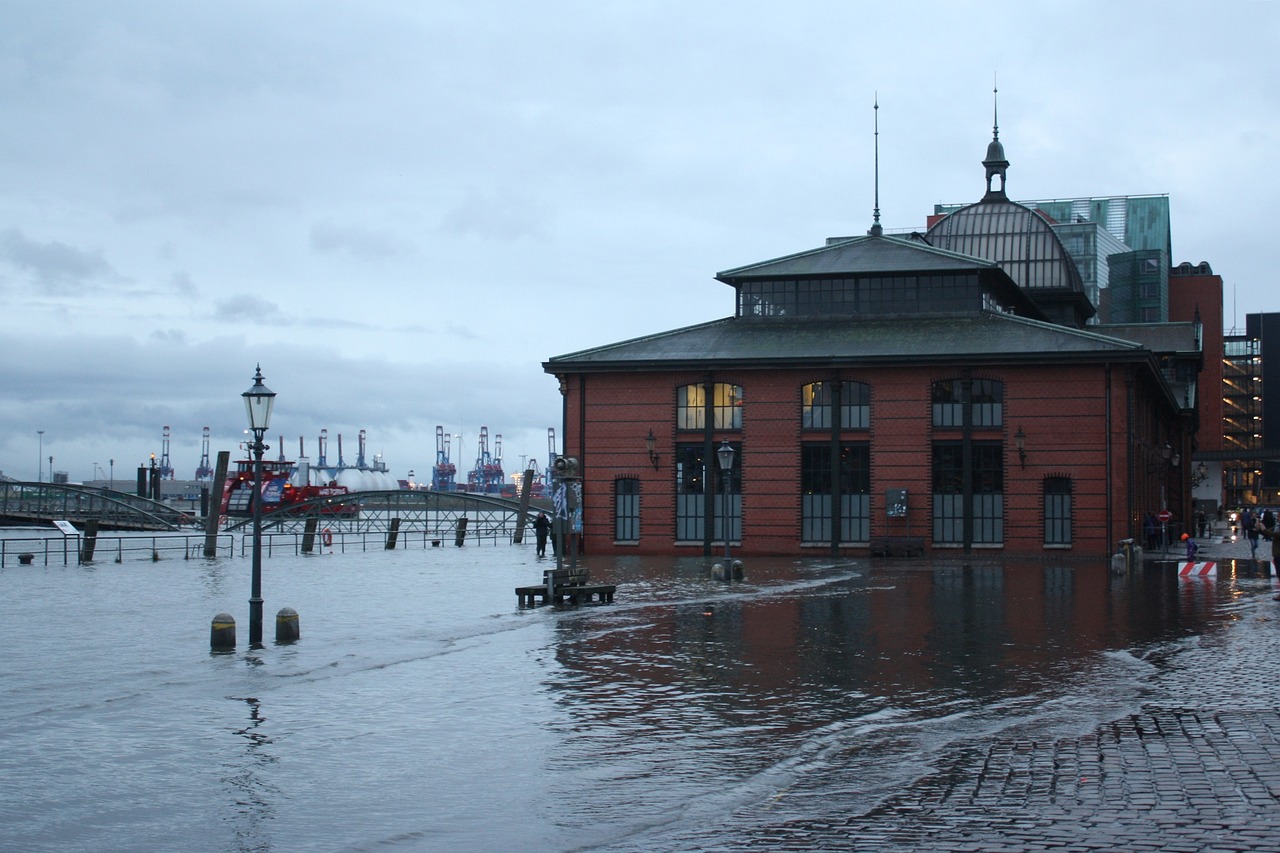Adapting Urban Environments Through Innovative Water Management Strategies

The Byrd Polar and Climate Research Center, in collaboration with the Center for Urban and Regional Analysis at The Ohio State University, hosted Professor Chris Zevenbergen from the Delft University of Technology for a presentation last month as part of their spring 2024 speaker series on climate lessons for our cities and global perspectives on climate change in urban environments.
Professor Zevenbergen, an expert in flood resilience, discussed the challenges cities currently face, the short-term, fragmented adaptation solutions and interventions most implement without any long-term vision of a regenerative, living city.
He clarified that climate change is driving change and forcing cities to adapt. Still, the main driving forces are energy and food production, not water and water issues.
Current successful intervention strategies implemented worldwide against stagnant, tropical rain storms with devastating floods include installing temporary barriers and walls, flood resilient architectures, underground water storage systems with green areas above ground, swales, and dikes that withstand storm surges.
Community engagement and local-led adaptation are other successful intervention strategies with a huge impact. One of the most important interventions to enhance the resilience of the cities is connecting ad-hoc, single projects to blue-green infrastructures and flood pathways to accommodate heavy storms.
Today, paradigms are shifting as climate change is no longer gradual. Models used to understand water systems' hydrology do not match observations, and infrastructures are not prepared for extreme events.

Traditionally, to deal with uncertainties in infrastructure design, the risk-based approach and cost-benefit analysis relied on historical data to make projections for a "Fail-Safe" infrastructure with a low probability of failure and gray solutions such as dams, levies, and coverts. However, failure was not taken into account in the design.
An emerging approach for dealing with such uncertainty in infrastructure design is a resilient-based approach, accounting for design failure in the design phase. This approach is also called "Sail-to-Fail" infrastructure. Compared to the risk-based approach, in which infrastructure design is meant to withstand uncertainties, the resilient-based approach also considers recovery, adaptation, and the temporal dimension when looking ahead. According to Professor Zevenbergen, green infrastructure uses the latter approach to enhance urban systems.
Uncertainties in urban planning and water management are becoming increasingly significant, necessitating a long-term strategy that extends beyond two decades. Adopting a worst-case approach can be costly and resource-intensive when choosing strategies to address these uncertainties. An alternative approach is a flexible strategy called Adaptive Delta Management (ADM), which encompasses a collection of interventions and adaptive pathways linking short-term decisions with long-term tasks.
The Three Points Approach (3PA) is an innovative methodology for designers, engineers, and city governments to minimize risk while maximizing benefits and encompassing stormwater management's extreme design and everyday domains. One domain is design exceedance or the technical domain, where engineers focus on traditional engineering solutions to detain and convey water. Another domain is the extreme domain, spatial planning, and contingency plans for potential system failure during severe weather events, advocating for flexibility through nature-based solutions, allowing the water to flow beyond traditional borders. The final domain is the everyday or day-to-day domain, where there is little or no rain, and the emphasis is on retaining water and allowing it to infiltrate and purify.
Professor Zevenbergen concluded that perspective should shift from adaptive planning and incremental adjustments to planned adaptation, ADM, and going beyond transition. Regarding design principles and 3PA, the target should evolve from merely enhancing the efficiency of interventions to maximizing value, designing for failure, and considering extreme scenarios. Additionally, it is essential to go beyond city boundaries to align strategies with broader systems. This approach should also integrate into national policies on water management, recognizing that no single solution exists; instead, a portfolio of measures is necessary to bolster system resilience.
The selection of measures should reconcile short-term solutions with a long-term vision, projecting decades ahead. This approach enables cities to align their investment agendas and capitalize on positive tipping points. Such opportunities may emerge from domains outside water management, such as energy transitions, and can catalyze a shift towards water-sensitive designs.
To access recordings of this and past events, visit our Vimeo channel.
Some examples:
- In The Netherlands, there is a competition to replace ground tiles and bricks with green infrastructure.
- New-built cities, such as the City of the Sun in the Netherlands, embrace multi-functionalities, including water bodies that are integrative and appealing views on resilience and water sensitivity.
- Rotterdam in The Netherlands is using an opportunistic approach, slowly transforming the city into a water-sensitive city, determining interventions and nature-based solutions at the end of the infrastructure lifetime and urban development, and envisioning the long-term future far beyond the transition- instead of forecasting, using back-casting to define the pathways to this future vision, moving away from the traditional, gray solutions.
- Copenhagen in Denmark has created the Cloudburst Management Plan, a strategy for extreme rainfall events.
- China is transitioning to Sponge Cities with green spaces where water systems are exposed, creating a multifunctional infrastructure for rainwater and a recreational environment. Across China, policies are in place with a 70% annual rainwater capture target, and 80% of the urban areas must meet the target by 2030.
Related stories:
- "Adapting stormwater management to extreme weather requires innovation, professor says," April 6, 2024, Ohio State News.
